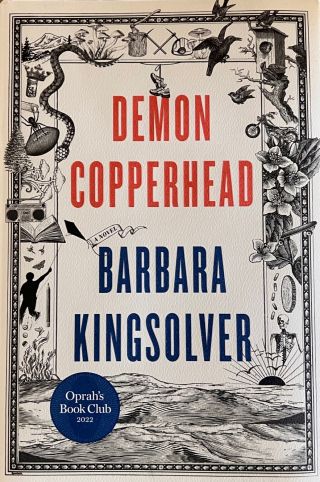Trauma
Did Trauma Damage Demon Copperhead's DNA?
A Personal Perspective: Epigenetics in the book "Demon Copperhead."
Posted June 19, 2023 Reviewed by Devon Frye
Key points
- Barbara Kingsolver's Pulitzer Prize-winning book, "Demon Copperhead," teaches lessons on epigenetics.
- The book shows how trauma can deprive people of the tools they need to take care of themselves or each other.
- Deprivation and degradation can lead to what more privileged people consider poor choices.
- The fallout of this trauma can passed down to our children and grandchildren.

Barbara Kingsolver’s Demon Copperhead is a master class in writing, but it is more than that. It is also one of the best demonstrations of epigenetics I have seen in literature.
According to epigenetic theory, the physical and psychological environment in which we live can affect how our DNA functions. The fallout of our trauma, then, can influence our DNA to the point that the stress we face in our lives can be passed down to our children and grandchildren. This results in intergenerational trauma.
Through Demon Copperhead, Kingsolver helped me understand how grief, loss, hunger, and pain can deprive people of the tools they need to take care of themselves or one another, and how this stress can move through generations. Demon’s life mirrors that of Charles Dickens’ David Copperfield, but with foster homes in place of orphanages, oxycontin instead of gin. Poverty, powerlessness, and child exploitation are much the same.
The book’s voice is its biggest strength, and through it, Kingsolver shows rather than tells how a life of deprivation and degradation can lead to what more privileged people consider poor choices. For those in the middle of the storm, they simply feel like the best of multiple bad options.
We’re inside Demon’s mind, so we can see how he processes all this, how he tries to make sense of his broken world. As the story builds and Demon’s life destructs, we begin to understand why he is how he is, why he does what he does, and how he ultimately becomes who he is. His voice is full of heart, but it is also heartbreaking. We’re not just reading a book, we’re living his life with him.
Demon narrates with the angst of a child, the naivete of a teen, and the hope of a young adult. He shares humor, pain, wisdom, and cluelessness in what is essentially a journal in which he is trying to figure himself out. It’s clear his journey started before he was born, with the battles and barriers his mother and father faced.
Who Are the Real Villains?
The villains in Demon Copperhead are the mining companies that degraded the land, extracting what they wanted and leaving the residents to live with their mess; the drug companies that knew how addictive pills like oxy were, but still pushed them relentlessly; a frayed social network that has no place for kids in poverty; and a healthcare system that doesn't reach Americans who need it the most.
This creates a system that weakens families in a web of self-destruction that can easily be blamed on human frailty. But rather than blaming, Kingsolver explains. Through Demon’s eyes, she shows how chaos descends on a person who once was a happy child running through the woods with his best friend, and how that chaos builds as the people who are supposed to support Demon fail him.
Demon lives in Lee County, Virginia, which is its own social ecosystem, a community that can cause wounds but also heal them. The people in the county understand the trauma of poverty, the despair of ever finding a better life, and the lure of drugs.
For Demon and most of his friends, Lee County is home. He cannot envision living anywhere else, especially in a city apartment where people don't even have lawns, let alone woods and mountains. His people may be a mess, but they are his. He loves them and learns that they love him too. Throughout the novel, he strives to belong, and, finally, at the end he does. Mostly.
The Kids Might Be OK
Kingsolver gives us an ambiguous, but generally hopeful ending. It’s possible that little baby Demons might someday arrive, who not only share their dad’s trademark red hair, but also his capacity for love, his creativity, wit, and resilience, not to mention some strong DNA from their likely mother. The kids might be OK.
Demon will carry his scars with him for life, but Kingsolver infuses the book with characters who help him find his own strength to combat them. The biggest hope of the book is that the community will help save him, and this will break the chain of trauma.


